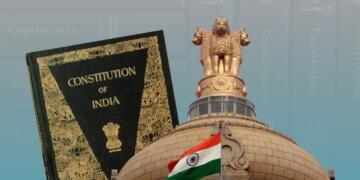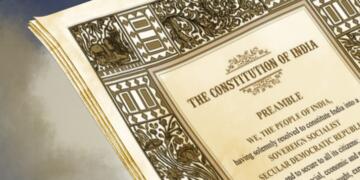Poverty porn is peddling poverty and misery as an art by constructing a narrative around it (its truth isn’t important), presenting the selected components (often the worst ones which can be turned into a melodrama onscreen or in print) of a disadvantaged community, a poor society or a tribe, and stringing together these worst anecdotes/incidents into a single story to garner accolades for having made a ‘’thoughtful work” .
One of the best known earlier works in print for these genre is the novel City of Joy by Dominique Lapierre where he describes life in a Kolkata slum for Bihari migrants in 1960s, puts in a white Christian missionary as a saviour (and slyly dedicating two pages to praise Mother Teresa).
It’s no surprise that the most acclaimed director from India in the west is Satyajit Ray, whose films did an exceptional job in selling India’s poverty beyond its shores. It was a celebration of India’s penury and deprivation by the world audience and Mr Ray never spoke a word about wanting to change all this.
It was just like paying a trip to the zoo, looking at the sad faces of caged animals and then going home.
NRI and PIO directors too have been very notorious for this be it Ismail Merchant who with James Ivory made movies throughout his career glorifying the British Raj and the Victorian era, or Mira Nair who made films like Salaam Bombay (1988) which centered around slums and brotherls, or Kamasutra (1996) which has to be the most grotesque representation of medieval India, where 16th century people dress like its 2nd century BC and indulge in nothing but sex sex and more sex.
Slumdog Millionaire (2008) is the most prominent international example of poverty porn winning the highest accolades, including Oscars for best director and film. Not one thing about India is shown good here.
Alongwith the copius shots of Dharavi, garbage dumps and beggars, Danny Boyle’s fascination with feces is featured prominently here as it was in his earlier film Trainspotting (1996). Not a single Indian character in this film is shown having an iota of decency.
The newest entrant in this category is Parched, which claims to show the poor Indian rural woman’s plight and lonely womans longing for love. In the set narrative of India which has to hover around poverty and kama sutra style sensuality, another epithet has been added recently:- Misogyny and rape culture.
Ever since the Dec 2012 horrific rape and murder of Jyoti Singh (Nirbhaya) in Delhi, India has largely been painted as a land of rapes by liberal western media.
No opportunity is lost to enforce this narrative, and no thought is given to the fact that India in respect to its huge population has one of the least number of crime rates in the world (any research on any statistics will reaffirm this fact).
**Parched – MOVIE SPOILERS BEGIN**
Parched is a story of three friends in a remote fictional village (which speaks a fictional dialect) in Kutch in Gujarat, Rani (Tannishtha Chatterjee), a 32 year old widow with a spoilt teenage son, Lajjo (Radhika Apte), a childless woman regularly battered by her husband, and Bijli (Surveen Chawla in a grossly overacted performance), a dancer and a part time prostitute.
Rani buys a bride Janaki (Lehar Khan) for a hefty sum of Rs 4 lakh for her son Gulab, but the bride is discovered to have shorn hair and is hence ridiculed by everyone in the village. Gulab feels cheated, starts hating his mother and starts visiting prostitutes.
Rani, Lajjo and many other women in the village sell their handicrafts in an NGO started by one of the villagers Kishan. Lajjo is the most talented of them, and she starts believing in herself once Bijli tells her that her being childless might be her husband’s fault, not hers.
Bijli is threatened by the arrival of a younger dancer in the troupe. Her dancing troupe is also threatened by the imminent arrival of cable TV in the village for which all the women have pooled in their resources.
The men in the village are shown as good for nothing, who do nothing more other than drink and deride the women or get paranoid about them getting eloped with someone else due to mobiles or cable tv.
A token panchayat scene is shown where a young woman facing sexual abuse is forcefully sent back to her in laws place. Nothing else is shown of the panchayat making any decisions of value for the village.
Rani, Lajjo and Bijli go on a full-fledged fun trip around the outskirts of the village, where Bijli makes Lajjo to sleep with one of her mystery lovers, an ascetic (Adil Hussain wasted in a miniscule role).
Rani is forced to surrender her house to the money lender as Gulab steals all the money meant for loan repayment and absconds. Bijli realises that the troupe member who she thought loves her wants to elope with her because he wants to pimp her out.
In Parched, Just like a typical commercial film ending , on dusshera, Lajjo’s husband is burnt alive after accidentally catching fire from while beating her. All three women escape the village, giggling towards an uncertain and exciting future. The end.
All their talk revolves around how their men drill them and what part of anatomy they would like in them. This is the boldness the director proudly shows us, including the dialogue in the end where Rani exclaims “we can survive by sewing, if not f***ing” .
The highlight of the Parched’s boldness is Lajjo riding the caveman (woman has to come on top in these films, literally). And these three skinny dipping.
All the three protagonists in Parched aren’t without flaws which denies them any moral high ground.
Rani’s encouragement of her mystery stalker on the mobile phone is portrayed as her longing for love. Sorry (director) Leena Yadav, stalking is not cute, its creepy and no harassment can be cute.
She’s shown as large hearted by sending her abused daughter in law with her earlier love interest, but her culpability in ruining her life by getting her married to her good for nothing son cant be denied.
Bijli’s ruin is by her own poor life choices. Lajjo tries blackmailing her husband in the end to accept her child by other man by his or be shamed. Or the womens escape in the end, where in the real world they can be easily apprehended as murder suspects.
**Parched – MOVIE SPOILERS END**
Unfortunately, it is the kind of bleak and depressing (and often stereotypical and misrepresented ) fare like Parched from or about India that gets picked by movie festivals the world over.
The sad part is that the people lapping up these kind of films are not just the western audiences and critics of the film festivals, but also the urban English educated higher middle class and affluent part of the society.
People outside India have to understand that the biggest sufferers of colonial mentality are these so called elite classes, because its them who have made self-hatred and putting the white man on pedestal the norm and look down on their fellow Indians coming from the lower strata of the society with more contempt than any outsider.
These are the people who take pride in speaking English, who try to wipe out every traces of Indianness from themselves and view anyone unable to speak English in a proper accent or diction as lowlife; these are the people who keep Shakespeare alive long after England has forgotten him.
This ‘’film festival’’ gang of directors from India or from abroad also come from this same class. And there is nothing more valuable for this cocktail circuit than approval from the west. It is their currency, their validation, their salvation and their collective orgasm.
Movies like Parched are made for international audiences so that they can feel good about themselves for being ‘lucky’ to live in the ‘first world’ (and getting fooled by their politicians into thinking so).
They know their audience, and more so, they know the jury in various film festivals (Cannes, Venice, Toronto etc.) or international film awards , which are comprised of militant progressive liberals who want to “save’’ Asian and African countries via some kind of manufactured social change.
The filmmakers (and actors) know very well how to play to this gallery, hence feminism, gay rights, sexual awakening and victimhood glorification are main themes of their films, and these elements are forcefully added even if there is no place for them in the script, because these are the lobbies in the western media that are to be pleased, if one has any chance of ‘’acclaim’’.
And they scream to them “we are your trained monkeys, selling your commandments, evangelizing every possible audience to your ideology. Please give us that award now”.
This is just another example of typical agenda of stereotyping India like countries by cherry picking isolated incidents and weaving them into a single tear jerking story, continuing it from where the previous similar maker left off.
There are issues in all societies, but every society has some inherent goodness, some beauty which these western based agenda driven directors and writers–often with Indian names—refuse to see.
All societies have grave issues within them, male dominance is everywhere, and the west is hardly the parameter to judge morality.
Because what fits the narrative is Mexico as a country ruled by drug cartels and whores, Russians being nothing more than spies or gangsters, Brazil as a country of gangsters, drug peddlers and favelas (and of course poverty), Chinese being either martial artists or buffoons, Africa being a continent where each country has a civil war, and of course India as a country which is a slum where a few happen to be call centre employees. Any attempt to talk sense into these filmmakers is brushed away by their next film which toes the same line.
Some horny teenagers might enjoy Ms Apte’s topless scenes in Parched, but it is nothing more than forced titillation in this equally forced narrative of how an Indian village is, and will be totally nonsensical to the average Indian adult.
While men are nothing more than almost comically cruel caricatures in Parched, sadly women too are reduced to nothing more than sexual objects.
Why do all of films like Parched which claim to speak for disadvantaged women only talk of carnal desires?
Are there no issues like women dying in childbirth or due to poor sanitation facilities in villages?
But hell, those issues arent kinky nor money spinning for the screen. There is no dearth of “Avant Garde wannabe” film-makers pissing on poverty by sexualizing it and using it to titillate Westerners.
If stereotyping, disrespecting, and misrepresenting some of the most defenseless and vulnerable people in the world is ”meaningful cinema” then cinema has come to a very sad state.
This is like enlarging a photograph of a semi naked tribal girl and display it to the “art lovers” to salivate on. May these so called filmmakers realise their own slave-mentality and find a way to understand what true freedom really is.
Until then, its only for a sane observer to grasp the depth of their intellectual and spiritual poverty. And that of the audience that consumes, rewards, and encourages ideological porn like this.
































